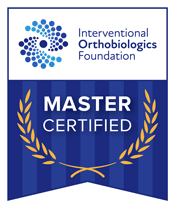What Is Extracorporeal Shock Wave Therapy (ESWT)?
Extracorporeal Shock Wave Therapy is an innovative procedure to help reduce acute and chronic pain emanating from certain types of musculoskeletal conditions. Extracorporeal Shock Wave Therapy, commonly referred to as ESWT, is part of an evidence based non-surgical approach in sports medicine. The ESWT device is placed at the target tissue, where it delivers controlled Shock Wave Energy into the inflamed tendons, bones and tissues in order to stimulate angiogenesis (new blood flow), decrease inflammation and help the target tissue remodel. Multiple studies have shown impressive improvements in damaged tendons and bones following ESWT procedures. This technique is used to help these areas heal themselves by stimulating the growth of new blood vessels, and ultimately leading to less pain.
What Conditions are Shock Wave Used for?
For ideal candidates, Extracorporeal Shock Wave Therapy can be very helpful in the procedure of a range of common musculoskeletal conditions. This technique may be an effective option on its own, or in combination with other procedure modalities for concerns such as:
- Tendon Conditions including:
- Achilles Tendonitis
- Patellar Tendonitis
- Shoulder Tendonitis
- Tennis Elbow
- Golfer’s Elbow
- Plantar fasciitis
- Swelling or inflammation in the bone (Bone Marrow Lesions)
- Acute muscle strains and tears
Depending on the condition and severity, ESWT may be a viable option for your condition in itself or in addition to other orthobiologic procedures like Platelet Rich Plasma or Bone Marrow Concentrate.
What Happens During Shock Wave Therapy?
ESWT procedures utilize a non-invasive probe, which is applied to the skin of the area being treated. The probe delivers waves of energy into the area being targeted. Most of the time there is not a need for local anesthetic. A typical procedure takes about 10 min.
What Recovery is Involved in Shock Wave Therapy?
Most patients do not have any downtime following procedure, although occasionally minor soreness or bruising can occur.
Successful ESWT procedures result in the body producing new tissue and new blood flow in order to restore function, which should take place gradually over the next several weeks. A series of ESWT procedures is usually necessary for patients to achieve the best possible results based on the available data.




